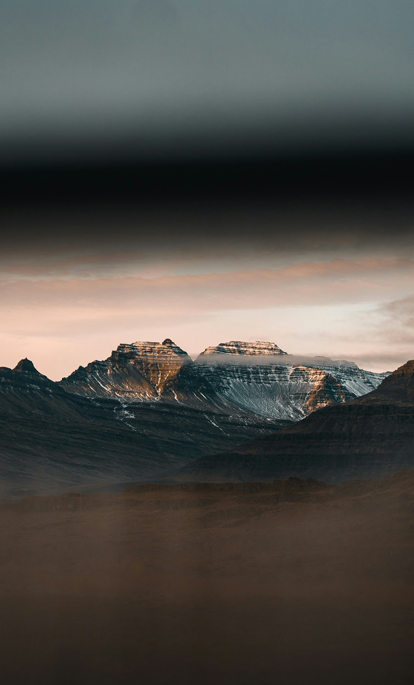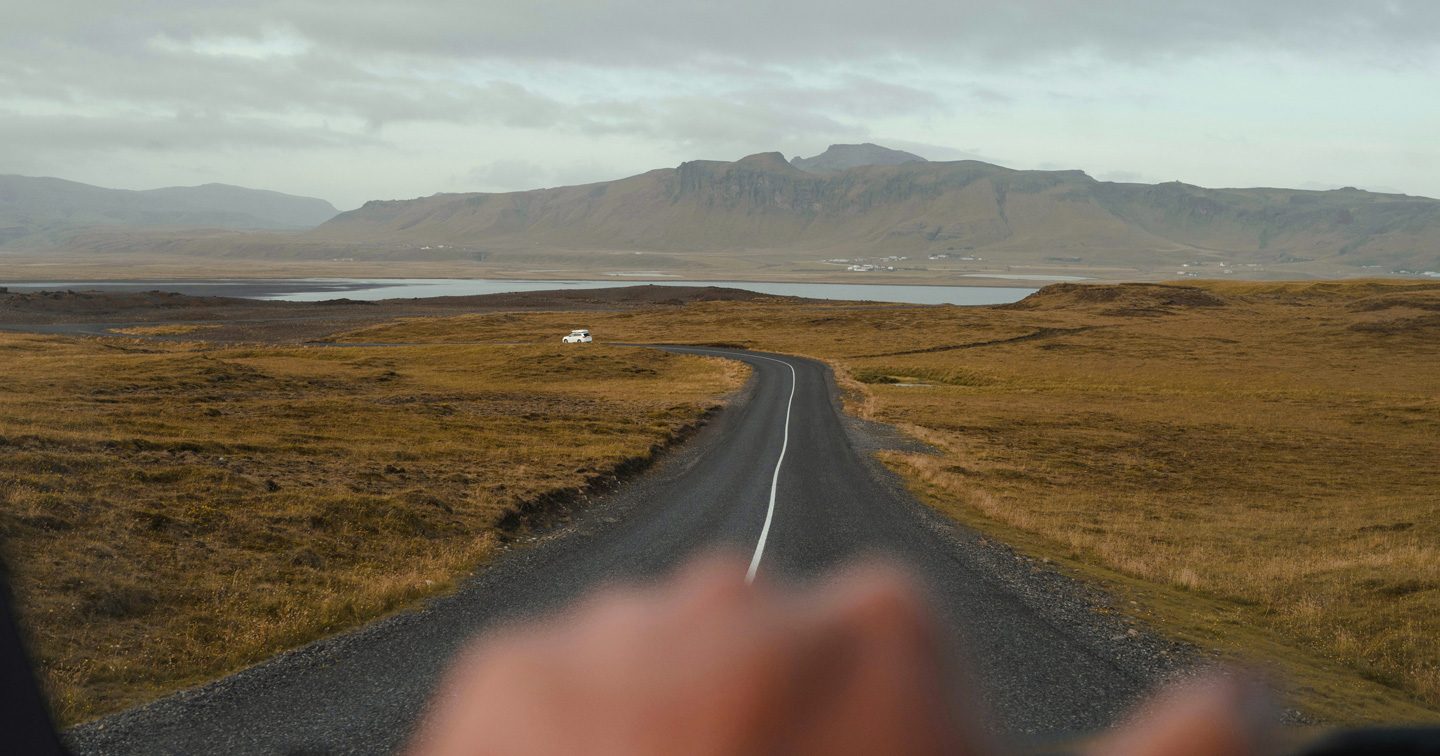
A few suggestions to get the holiday planning process started

Using a wealth of experience, our team can help you venture off the well-trodden trail of the Golden Circle to areas such as the Snaefellsnes Peninsula, a microcosm of the ‘land of fire and ice’, or to the Highlands in the country’s centre for epic hiking trips. We plan every experience to suit you, whether you want to snowmobile across a glacier or taste freshly caught seafood on the deck of a fishing trawler. In a country where changeable weather conditions and volcanic activity can quickly disrupt plans, our excellent team of local guides and our helpful Concierges offer invaluable support.
ENQUIRE NOWDiscover different ways to explore Iceland
Practical advice and inspiration to help you prepare for your holiday
Our team of clued-up consultants will ensure you get the most out of Iceland’s otherworldly landscapes, from its thundering waterfalls to its black volcanic shores. Iceland is a notoriously challenging destination to navigate on your own, thanks mostly to its unpredictable climate and limited accommodation. So we'll help you navigate the volcanic landscapes, secure the best rates and only recommend vetted properties, be it rustic, rural farmhouses or handsome hotels in the colourful capital, Reykjavik. In the capable hands of our exceptional in-country team, you'll traverse Iceland's ample natural wonders with peace of mind.

Iceland holidays are ideal for adventurers or those yearning for a taste of beautiful wilderness. It’s also perfect for families who want to appreciate fresh air and long summer days. Spend the long days exploring ice cream farms or travelling round the coast on the hunt for puffins with beaks as orange as the midnight sun and feathers the colour of the black sand beaches they reside on. In winter, Reykjavik’s Christmas lights illuminate the city, a wonder for youngsters who will most likely meet the 13 Yule Lads - festive trolls who are the Icelandic equivalent of Father Christmas. This is also the best time to keep your eyes peeled for the glistening wonder of the the Northern Lights. Iceland holidays are also perfect for teens who can let loose, hiking, snowmobiling or sledding with huskies.
Iceland has a population of 320,000. That's it. That's the same as Nottingham alone. A third of those hardy Icelanders live in the capital, Reykjavik, making the rest of the country one of the emptiest in the world. As well as having one of the lowest population densities, Iceland is pretty much self-sufficient. The country meets most of its energy needs from natural geothermal power, thanks to the sheer power found on this volcanic island. As a result, pristine landscapes of fjords, mountains, glaciers, and moss-covered lava fields still dominate most of the island.
Explore untamed landscapes from dramatic coasts and black-sand beaches to snow-capped volcanoes and steaming hot springs. Cross vast fjord beds in a 4x4, go whale and puffin watching along the rocky coastline or traverse year-round over glistening glaciers. After all that adventure, you can take a long soak in the many steaming geothermal baths or slow the pace down visiting pretty fishing towns with local charm. Then there are the Northern Lights, best seen on a fun super Jeep (4x4s with massive wheels) adventure or tucked up in a cosy cabin in the Icelandic wilderness. Nothing can quite prepare you for this shimmering spectacle lighting up a clear night’s sky, as bright shades of pink, purple and green dance across the midnight sky.
The most obvious starting point on any Iceland holidays should be Reykjavik and after a stint in the capital, we recommend hiring a car to explore the rest of the country at your leisure. We particularly love a Golden Circle or Silver Circle adventure. Where to stay? We have a handful of exciting and unusual hotels, all with wow factor, that are the ultimate base for your explorations. This could be a chic design hotel perfect for a boutique break or an adventure lodge-come-feat-of-architecture with floor-to-ceiling glass windows. Or base yourself out of a converted sheep farmhouse in wonderful isolation, from where you can go snowmobiling in the surrounding crisp white snow and afterwards hole up in the spa.
When in Iceland, do as the Icelanders do and take the spa seriously. With saunas and geothermal baths at every turn, it’s almost an injustice not to pamper yourself. Take to a smoke sauna heated by a wood fire and if you’re feeling brave, follow tradition and get your heart pumping by rolling in the snow.
Before you head out into the wild, your first stop will be Reykjavik, the most northerly capital in the world, and a place that looks and feels more like a small fishing village than a capital. The city has a very quirky charm all of its own, with a selection of funky hotels and bustling nightlife. The good news is that Reykjavik is also so small you'll never get FOMO (Fear Of Missing Out) as you just wander five minutes around the corner to find another fun place to explore. You may even stumble across the Icelandic Phallological Museum, at which point you might want to cover the youngsters’ eyes. While you wander, it's also worth checking out the statue of explorer Leif Erikson outside the extraordinary Hallgrimskirkja church, which is designed to look like Iceland's basalt lava flows. A gift from the USA, the statue acknowledges that it was a Viking who actually discovered the Americas several hundred years before Christopher Columbus.
Away from the capital, Snæfellsnes is a typical part of Iceland – a starkly beautiful peninsula jutting into the North Atlantic on Iceland’s western coast. Closely connected with the Norse Sagas, this region was also the birthplace of Mr Explorer Erikson himself, and the Snæfellsnes volcano is where Jules Verne’s adventurers journeyed to the centre of the world. Road trip along lava fields and stumble upon tiny red-roofed churches dotted sporadically across the countryside.
Another intriguing place to visit is Southern Iceland, home to yet more spectacular scenery, and the villainous volcano Eyjafjallajokull which caused so much air travel chaos in 2010. Snap an iconic shot of yourself in front of Skogafoss with its double rainbows before venturing along the coast to the infamous black beaches of Vic and Reynisfjara where you will get a feel of just how wild this Nordic country is. Diamond Beach is another otherworldly sight along the south coast. Huge clear-blue diamonds of ice coat the beach having made their way down from the looming Breiðamerkurjökull glacier. Keep your eyes peeled for the bobbing head of an Icelandic seal or the impressive dorsal fin of an Orca emerging from the white, icy waves.

Our team of destination experts will get to know you and your unique requirements for your holiday

We work with you to build an ultra-personalised holiday itinerary with your choice of accommodation, experiences and activities

All of our holidays include little extras designed to make a big difference to your trip, from fast-tracking you through airport check-in and security to our network of local Concierges